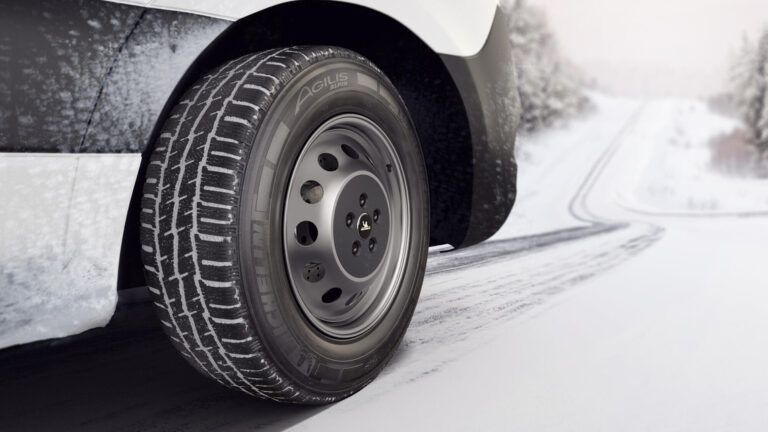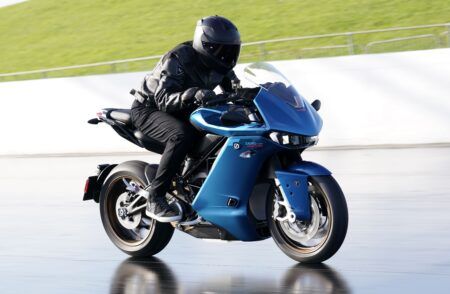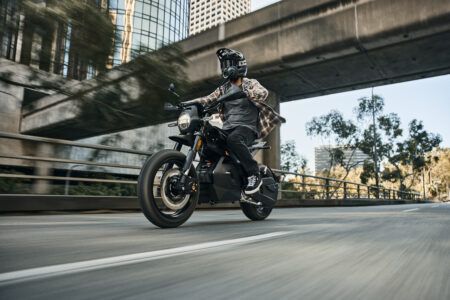As the passenger vehicle market pivots to focus on low and zero emission fuels, new challenges arise that require innovative product solutions, namely in tire technology. E&HVT spoke to five different tire suppliers to understand their various approaches to manufacturing EV tires, and what the future holds.
“Electric vehicles (EVs) have different characteristics than existing internal combustion engine (ICE) vehicles, and therefore require optimized tires.” says Ki Jong Kil, Vice President of the RE Development Department at Hankook Tire. “Because of these differences, EV tires aim to achieve a high load capacity, noise reduction, high grip and low rolling resistance.”
Whether they’re paired with EV or ICE vehicles, wear and rolling resistance has become increasingly important to maximize fuel efficiency. EVs are typically heavier than their equivalent ICE counterparts, so tires tend to wear more quickly. “Our research has shown that EVs can wear out tires 30 to 40 percent faster than ICE vehicles,” says Bridgestone Product Manager, Brad Robison. This means manufacturers must use compounds that are robust enough to have good a wear characteristic while maintaining low rolling resistance.
While Hankook, Sumitomo and Bridgestone all offer EV specific tires aimed at customers with electric or hybrid vehicles, Michelin combines these approaches to offer dedicated EV tires as well as tires which are suitable for both EVs and ICE vehicles. Underlining the importance of low rolling resistance tires for EVs, Carl Williams, Manager – Customer Engineering Support Team UK and Ireland, Michelin Tire plc, explains, “Thanks to its design, Michelin’s e.Primacy offers an up to 7 percent increase in range.” Combined with an economical driving style, this can have a significant impact on an EVs’ range, resulting in less time charging.
In addition to low rolling resistance, Hankook ensures even wear by using its round even technology in the tire structure to achieve uniform road contact. Kil says this can increase mileage by up to 20 percent which is used in conjunction with the Opti Tread pattern to optimize block stiffness and Hankook’s ProDurable compound to extend tire life. The compound features a high concentration of silica and functional polymers that are mixed to the desired characteristic.
Similarly, Bridgestone’s tread compound Peak Life uses polymers that bond more efficiently with silica to create a hard-wearing material with low rolling resistance. As a result, Bridgestone’s Turanza EV product comes with a 50,000-mile warranty.
Unlike its competitors, Continental has optimized its product line to be ‘EV ready’, instead of producing a separate product line for EV owners. The company employs a dual compound method to achieve desired low rolling resistance and wet grip capabilities. “The cap compound is the one that ensures we have good wet grip performance and underneath the base compound has a low rolling resistance,” says Steve Howat, General Manager – Technical Services, Continental. “We strive for A-labeled tires for rolling resistance with low coefficient figures close to five.”
For the most part, testing these new compounds follows traditional processes but Dr Bernd Löwenhaupt, Managing Director of Sumitomo Rubber Europe GmbH notes, “In general, testing is similar to ICE vehicles with the exception of the wear test – because we cannot achieve the same mileage in a day.”
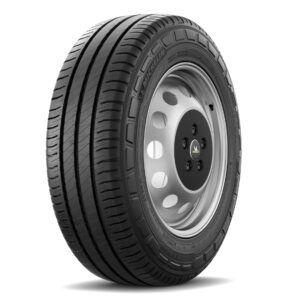 Noise, vibration, and harshness
Noise, vibration, and harshness
Differences between EVs and ICE vehicles also play a part when it comes to the experience of the tires from inside the vehicle. Traditionally tire noise reduction has focused on sound generated externally that can be heard from the roadside. However, with the absence of engine noise in EVs, tire sound has a far greater impact on the cabin experience. Tires account for an estimated 30 to 40 percent of interior noise so reducing tire sound is key to achieving a quieter ride. Modern tire manufacturing sees this problem addressed in two ways.
Firstly, Bridgestone approaches noise reduction through its QuietTrack technology which optimizes the tread design to dampen road noise. “There’s subsurface features in the bottom of the groove that help break up the resonance of the sound, so you don’t get certain high frequency sounds,” says Robison.
Elsewhere, manufacturers including Continental, Hankook, Michelin and Sumitomo use material on the inside of the tire to reduce noise. For example, Hankook’s iON Sound Absorber reduces the noise pitch sequence. “This material can lessen the noise inside by about 5 dB,” says Kil.
Sumitomo combines sipe design with an internal noise-absorbing sponge called Silent Core used in its Falken EV tire products. Dr Löwenhaupt notes, “External noise needs to meet regulations, but internal noise and comfort are very important because BEVs have less noise emission.” As noise regulation becomes more stringent, interior noise will be a key priority for manufacturers as the number of EVs on the road increases.
Michelin’s acoustic technology reduces interior noise by around 20 percent. Williams explains, “A custom designed polyurethane foam solution muffles noise resonance and effectively reduces vibrations caused by the road, resulting in a significant reduction of interior noise.” These noise reduction measures allow drivers and passengers to enjoy sound systems and hands-free features within the vehicle in a quiet environment.
In line with the evolution of vehicles, the aspect ratio of tires has decreased to improve handling performance. Whilst this provides significant advantages, “Tires with a 25 percent aspect ratio are really stiff and very rigid but from an acoustic and NVH point of view, they’re pretty poor,” says Williams. To combat this without increasing the aspect ratio Continental uses pattern optimization, carcass design and acoustic dampening inside the tire called ContiSilent.
Block configuration can be used to make a pattern stable, hence reducing its noise output when it comes into contact with the road. But the pattern can only be the most effective in reducing noise if the tire is correctly inflated and suited to the load of an EV.
High-load capacity
On average EVs can be around 30 percent heavier than their equivalent ICE models so as well as increasing wear this means tires need to be structurally strong enough to carry more weight. Passenger cars typically use either standard load or extra load rated tires. Given EVs are considerably heavier, they can exceed the safe carrying capacity of extra load tires, so manufacturers have developed high load tires to address this.
Howat says, “Extra load has been around for many years, but high load is in an entirely different stratosphere as far as carrying capacity is concerned.” This gives automotive manufacturers the freedom to make vehicles with more batteries to increase range without risking the tires being unsafe. High load tires typically require higher pressures to ensure the tire is bearing the vehicle’s weight properly. Tire pressure is also an essential factor that affords the tread greater longevity.
This becomes even more important on commercial vehicles. For Michelin’s X InCity EV Z e-bus tire, “The casing is enhanced with Powercoil – the name we give to robust steel cables that improve endurance,” Williams explains. “And a bead design called Duracoil, which helps to protect the bead area leading to improved stability, casing endurance and retreadability.” This is aided by Forcion compound technology which improves resistance to abrasions, cuts, chunking and chipping.
As electric trucks and buses are far fewer in numbers than electric passenger cars, there’s yet to be a large demand for specialist tires for these vehicles. Zero-emission buses are the subject of government support in many European countries so uptake for these vehicles is stronger. Hence, manufacturers such as Continental and Michelin have launched e-bus tires. Hankook’s e-Smart City AU56 tire for urban buses will be launched this year.
“The Michelin X InCity EV Z is the first commercial vehicle tire Michelin has designed specifically for EVs,” says Williams. “It is able to handle the additional weight of an electric bus’s batteries, with an increased load-carrying capacity of up to 8-tonnes.” On the electric truck front, Michelin offers a product line suitable for these vehicles too. “Volvo Trucks’ entire national UK demonstrator fleet of EVs in 2023 was shod with Michelin tires as original equipment,” Williams says.
Although the EV truck tire market is in its infancy, Howat says, “We expect a huge ramp up in zero-emission commercial vehicles in the next few years.” With this there will be specific challenges associated with creating the right tire for these vehicles. Namely, load index will be of greater importance given the weight of electric trucks is greater than ICE trucks.
In considering the viability of retreading EV truck tires Howat says, “The higher the load on the casing, the more stress on it. The reality is we’re reliant on good pressure maintenance levels to ensure that we haven’t overstressed the tire and made it unsuitable for retreading.”
Just like passenger cars, pressure monitoring is likely to be an essential component in ensuring these tires provide the greatest efficiency and longevity for operators. As the purchase price of electric trucks is still significantly higher than equivalent diesel vehicles, savings that can be made in retreading and good tire maintenance will contribute to lower running costs over time.
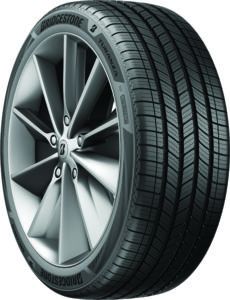
Sustainability
The extent to which tires suited to EVs can contribute to sustainability targets is threefold. Firstly, tires facilitate optimized range capabilities by maximizing energy efficiency. This results in less electricity consumption as the vehicle will be able to travel further between charges when equipped with suitable tires. Kil says, “choosing EV products could contribute to greener supply chains and manufacturing since the tires’ reduced rolling resistance can improve the environmental impact of EVs.”
As well as allowing the car to be more efficient, EV tires often feature higher levels of sustainable materials. An example of this is Bridgestone’s Turanza EV tire which includes materials such as recycled carbon black, synthetic rubber from plastic bags and bottles, renewable soybean oil and rice husk silica from rice husks which were previously a waste product. Similarly, the Falken e.ZIEX, made by Sumitomo contains up to 29 percent sustainable and recycled raw materials.
Finally, on top of being more sustainable in manufacturing, the tire needs to have minimal impact on the environment during its lifetime. Euro 7 regulations will be the first to include tire emissions as part of a vehicle’s overall environmental impact. This means tire manufacturers must reduce micro plastic particles emitted from the tire as it wears. Howat explains this is another area where competing tire characteristics make it difficult to create the ideal tire, but legislation is driving this aspect of tire sustainability. “We need to get grip and good wet traction, but this can compromise mileage,” he says. “But we need great mileage because we don’t want to emit micro plastic pollutants, so it’s a tricky balancing act.”
The above mainly focus on passenger tires but commercial vehicle tires can be retreaded to offer these tires a second life. Continental and Michelin both have retreading facilities where raw materials are recovered. Williams says, “Retreading a Michelin tire saves around 70 percent of the materials needed compared to producing a new tire, and costs around 30 percent less.”


